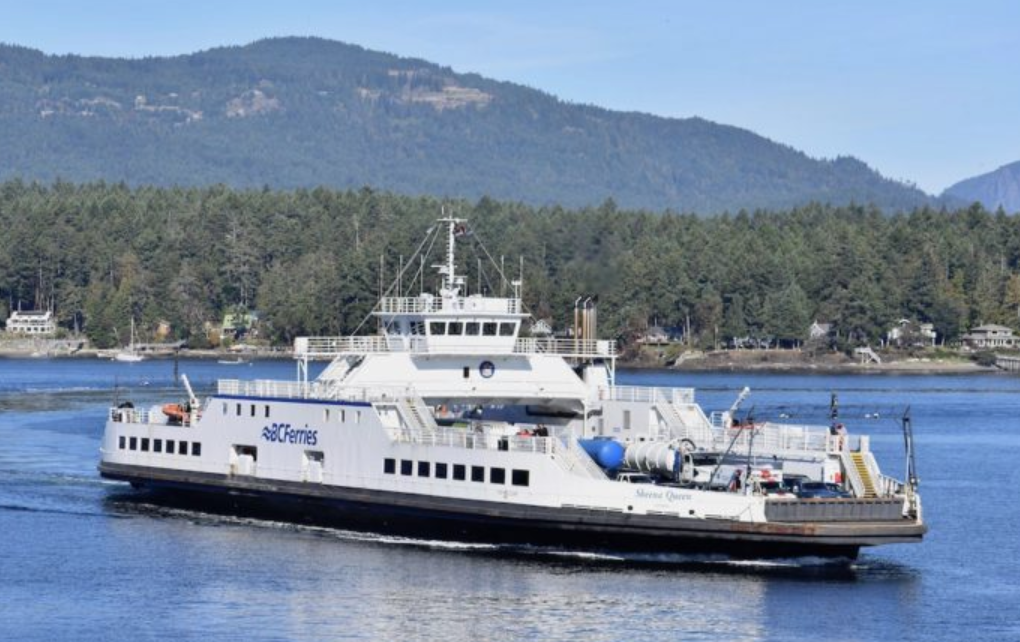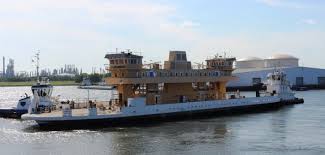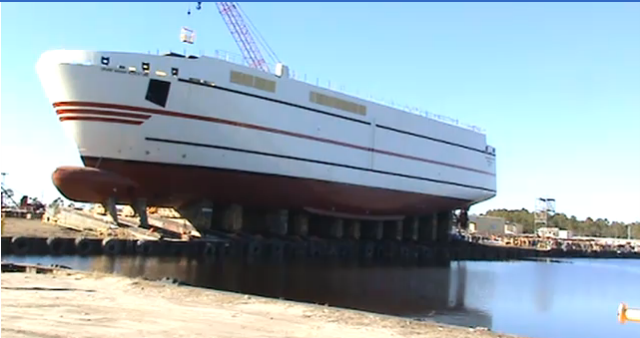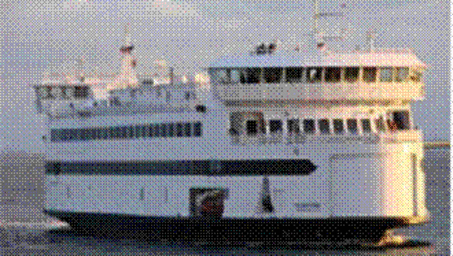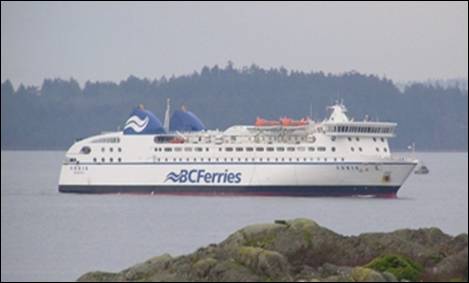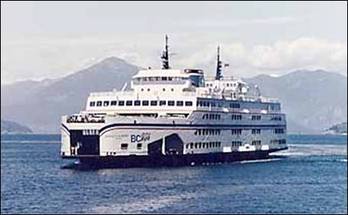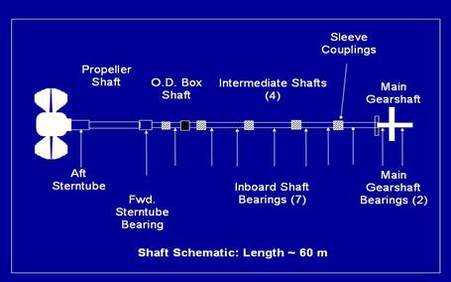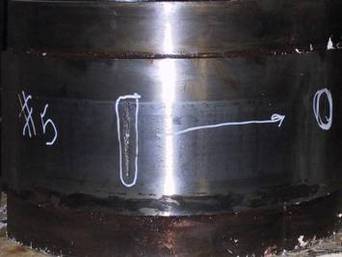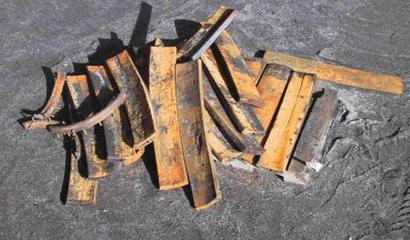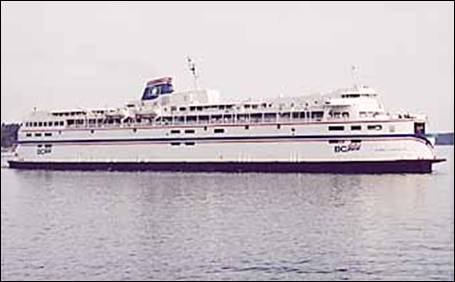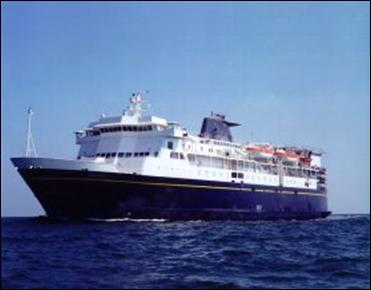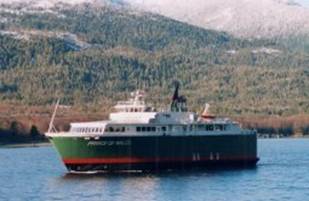Ferries
|
Work continues on a number of Ferries each year, with over 30 serviced up to 2020. This includes new construction, refit and troubleshooting for shaft alignment, powering and vibration. The following is a partial list of the Ferries:
BC Ferries
|
|
MV Grand Mannan (2 x 300 HP)
The MV Grand Mannan Adventure (GMA) was constructed by Eastern Shipbuilding Group Inc. of Panama City, Florida. The GMA has an overall length of 85.5 meters, a design draft of 4.52 meters, and a capacity of 80 cars and 10 Tractor Trailers, and can accommodate up to 380 passengers and crew. The vessel has a twin screw propulsion arrangement. Each of the four bladed controllable pitch propellers is driven by a diesel engine with a rating of 3000 HP at 900 RPM, through a single reduction gearbox. Each propulsion shaftline is approximately 26 m long, and is supported by a strut bearing, two sterntube bearings and one intermediate shaft bearing. The gearshaft is supported by two roller bearings. LamaLo Technology Inc. was contracted to ensure that the propulsion shafting system from the gearbox to the propeller had a satisfactory alignment when the vessel was waterborne and fully outfitted, for all modes of operation. The vessel went into service in 2011.
|
MV Island Home (2 x 3000 HP)The MV Island Home, a 255' Double Ended Ferry, was constructed at VTHalter Marine Shipyard at Moss Point, Mississippi. The MV Island Home replaced the 200-foot MV Islander, which had been operating between Woods Hole and Martha’s Vineyard for the last half-century. The vessel has a double-ended twin screw propeller configuration. Each of the 5 bladed fixed pitch propellers is directly driven by a diesel engine with a rating of 3,000 HP at 900 RPM, through a single reduction reversible gearbox. Each of the two main engines is located near mid-ships and the corresponding gearbox is mid-way between the propeller and the main engines. The propulsion shaftline on the propeller side of the gearbox is 42' long, and is supported by a strut, a sterntube and a lineshaft bearing. The main gear shaft is supported by two spherical roller bearings. The propulsion shaftline forward of the gearbox is about 44' long and is a carbon-fiber type. LamaLo Technology Inc was contracted to ensure that the propulsion shafting system from the gearbox to the propeller had a satisfactory alignment when the vessel was waterborne and fully outfitted, for all modes of operation, and that the axial or lateral shaft vibrations were acceptable. The vessel went into service in March 2007.
|
MV Northern Adventure (2 x 8000 kW)The MV Northern Adventure (NADV), formerly named MV Sonia, was purchased from in October 2006 to replace the sunken Queen of the North to operate the Inside Passage and Queen Charlotte Islands Route. The NAVD has an overall length of 117 meters, a gross tonnage of 9900, and a car capacity of 101 and can accommodate up to 600 passengers and crew. The service speed is 20.3 knots. The installed diesel propulsion power is 2 x 8,000 kW (16,000 kW / 21,400 HP). Vibration and alignment investigations were conducted.
|
MV Queen of Alberni
|
|
Damaged Inner Race - Roller Bearing
Damaged Aft Sterntube Bearings
|
“C” Class Ferries
|
MV Queen of Vancouver
|
MV Kennicott
|
MV Joseph and Clara SmallwoodThe MV Joseph and Clara Smallwood is a passenger/car ferry that operates between North Sydney, Nova Scotia and Port aux Basques, Canada. The vessel is 27600 gross tons and 179 m long with a beam of 25 m and a draft of 6.75 m. An investigation was undertaken to determine the root cause of continued lineshaft bearing failures and to provide recommendations to prevent further failures. The investigation included a review of the failures, assessment of the bearing design, theoretical modeling of the alignment condition, and measurements of the alignment condition. It was determined that the lineshaft bearing load capacity was marginal and that the shafting was misaligned to the gearbox. A complete realignment of both shaftlines was conducted in March-April 2003 when repairs were required to a main engine. However, lineshaft bearing failures (wiping) continued to occur, with an indication of over-loading. A pressurized oil lubrication system was installed to increase the bearing load capacity. The performance of the bearings has since reported to be acceptable.
|
MV Prince of Wales
|

